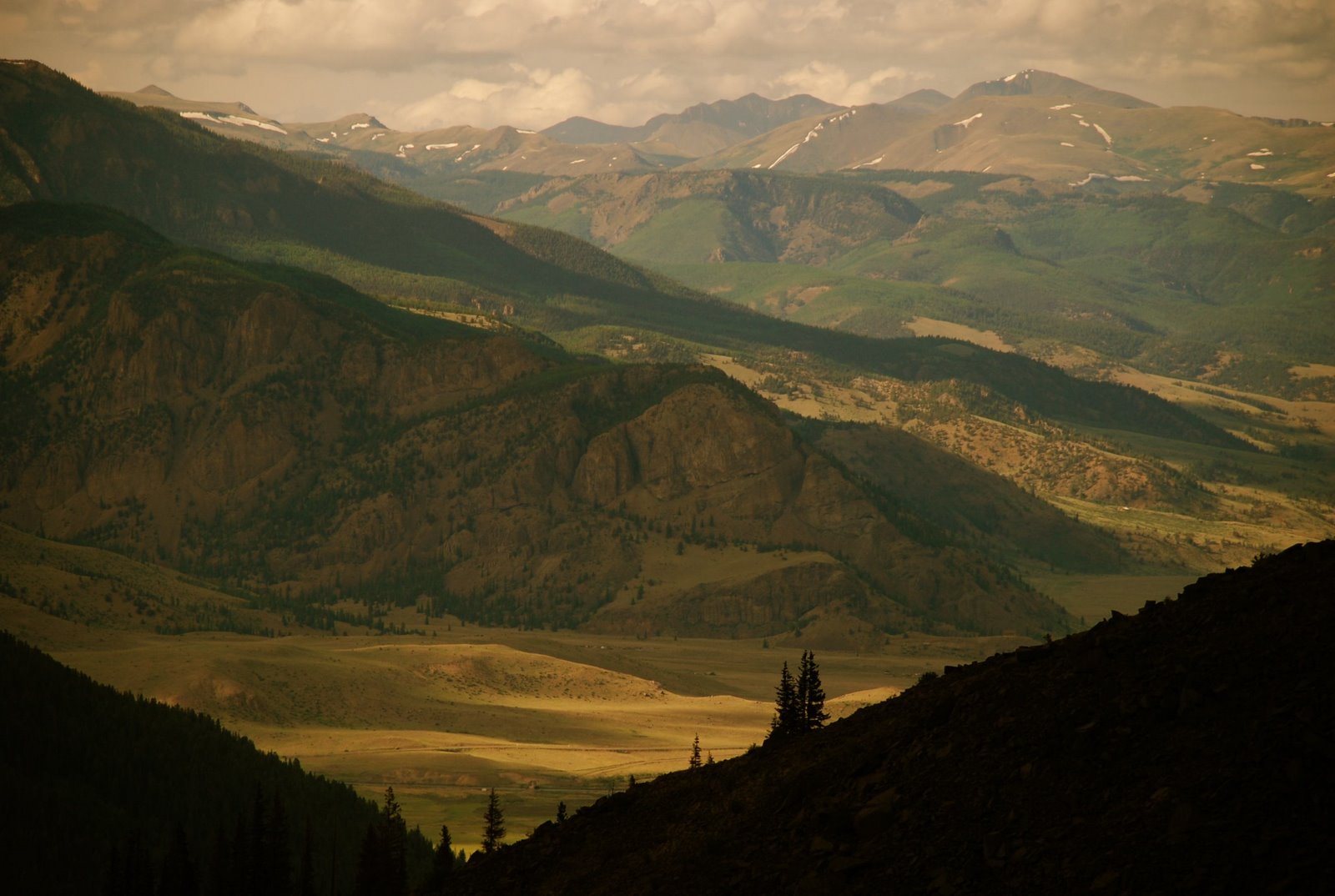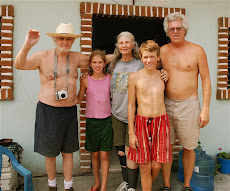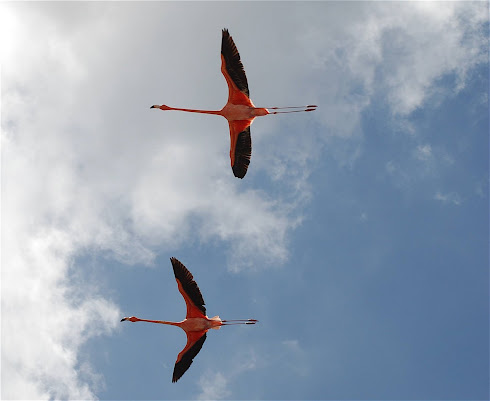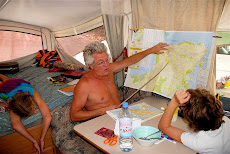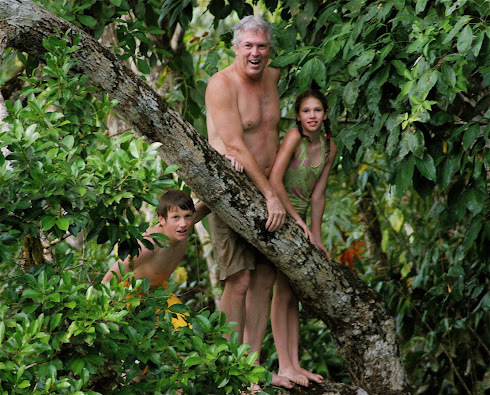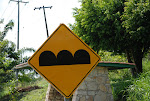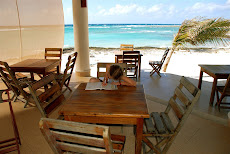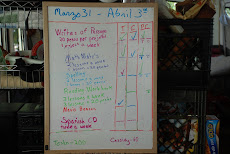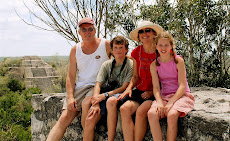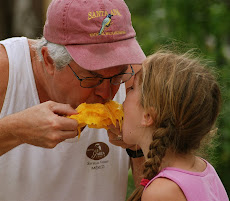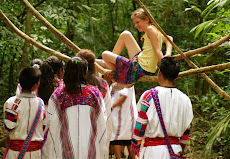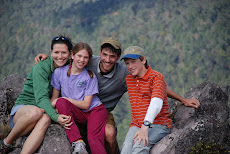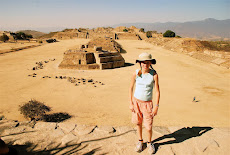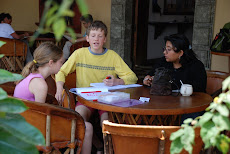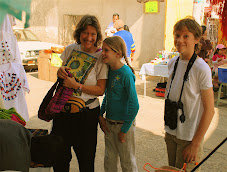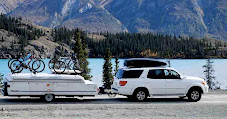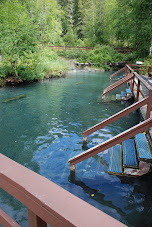The view west from the homestead
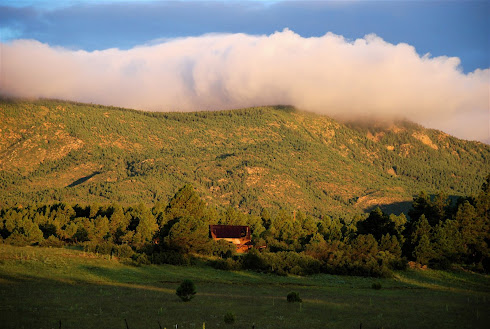
Sweet Chance

Tuesday, December 18, 2007
Playing House in Tucson, Arizona
We are settled into Lee and Joyces' house in West Tucson out in the Saguaros. We are house sitting for almost a month and taking care of their 12 week old yellow lab Tess (AKA Leaky Cauldron) and her Uncle Tack (who holds his water just fine). We spread out like wild fire once we parked the pop-up, and could actually each have our own bed if we wanted. Chris and Teslin just went back to the Amherst area for a week for Teslin's birthday, while Cassidy and Anny went into SE Arizona to go birding. Alas, the birders were victims of a rare southern Arizona "winter" storm with much rain, wind and some snow, but still saw an amazing array of birds (13 life birds for Cassidy), and met some wonderful folks. More on that to come.....
The holiday season is as surreal when traveling as it is when you have a permanent home, but it is somewhat easier to ignore the ugliness. We are trying to focus on some of the amazing inequities in our society, the casualties of our capitalist way of life, and the need to give back something to those who have less. The kids and us are all talking on how to make that happen here in Tucson. This whole trip has been a gift to our family- seeing the country, being outside, being together, and NO WORK! Mexico is just around the corner as we contact language schools and potential volunteer sites in Oaxaca. We're getting the car and trailer fine tuned for the southern journey. If anyone has ideas of agencies or NGO's that are active in Oaxaca, Chiapas or the Yucutan, please let us know.
Much love to you all over these days. We realize how many great people we have moved on from and this season of gatherings makes the distance seem greater. Wishing you all peace and serenity and JOY!
The Roving Ruges
Tuesday, December 4, 2007
Whooping Cranes by Teslin
PHYSICAL CHARACTERISTICS The adult Whooping Crane has a red crown, a white body with long dark legs and a long dark pointed bill. Black wing tips can be seen in flight on the adults. The immature, meanwhile, has a pale brown body without a crown. The immature whooping crane also has long dark legs which trail behind in flight. The adult whooping crane stands nearly 1.5 meters (5 feet) tall. Their wing span is 2.3 meters (7.5 feet) long. The adult male weighs an average of 7.5 kg (16.5 lbs). The adult female weighs about 6.5 kg (14.3 lbs).
HABITAT The Whooping cranes only known nesting habitat is Wood Buffalo National Park in Alberta, Canada, and the surrounding area. They nest on the ground, usually on a raised area of a marsh. The female lays 1 to 3 eggs at a time. She usually lays her eggs late April to May. The incubation period is 29 to 35 days.
DIET Whooping Cranes are omnivores which mean they eat plants and animals and other things. In other words it means that they eat everything. They forage for food while walking silently in shallow water or fields, while poking around with there long bill. They eat food ranging from snakes to berries in the winter and smaller birds to seeds in the summer!!!!
CONSERVATION EFFORTS Many of you have probably seen the movie Fly Away Home in which they trained the Canada Geese to follow an ultra light. They managed to do the same thing with the Whoopers and it was successful.
Saturday, December 1, 2007
Birding in Bosque del Apache, New Mexico
I went to Bosque with my dad at about 5:50AM to watch the Flyoff (the Flyoff is when the Snow Geese and Cranes fly out of their roosting spot to go and find food in other fields). We (my dad and I) stood on "The Flight Deck" where the Flyoff can be watched for about 30 minutes before all the birds took off. When you see it, it looks truly spectacular as thousands of birds take off at the same time!
Well, I hope you are all having a good time back east and keeping healthy. I'll remember to write a Bird Report soon enough. Good-bye for now all you bird people!
Cassidy
Wednesday, November 28, 2007
SANTA FE, NEW MEXICO- November 24, 2007

We are at our good friend David Benavides’ cabin off the road to the Santa Fe ski basin. We arrived here from Moab November 20th and have been nestled in the Ponderosa pines at about 8000 feet. Dave has a great cabin he has rented for 7 years from “an old hippie” as he calls himself who moved here with a group of friends in the 60’s and homesteaded this canyon. It’s cozy with a small bedroom and loft, wood stove for heat and an outhouse (thank god for the carpeted seat). We’ve been sleeping in the pop-up and have broken new records….last night got down to 12 degrees and we were actually toasty under our down bags and comforters! The second night here we got 4 inches of snow and the canvas above the bed was sagging from the weight of it when we awoke. It was great---it felt like we were in a giant cocoon.
The 5 of us made Thanksgiving dinner at Dave’s cabin and his folks came up from Santa Fe to join us. It was a great group effort, especially since none of us have done our own before. One of those times when you realize how much goes into this rather excessive tradition. It’s amazing that Chris, Dave and I have made it this far into our 40’s and 50’s and haven’t done this yet! But we did great and had a tasty dinner. We followed this up with another traditional dinner on Friday at Dave’s parents which almost made a trip to the mall for bigger clothes mandatory.
Dave is considering being a homeowner after many years of renting and we have been discussing the possibility of going in together on a house if we settle here. We’ve looked at some interesting houses/compounds and we’ll see what the future brings. Many areas are actually affordable which surprised us for this part of NM. The house searches which we have done in Boulder, Grand Junction, and Manitou Springs have been a little time-consuming but have given us a good idea of what it would cost to live in the different areas. It has been stressful to the kids to talk about resettling in these different areas as it takes longer for them to let go after we move on to the next possibility. How we do this as we move forward will be a work in progress.
Our next leg of travel will take us to Albuquerque, Bosque del Apache Refuge, Portal and finally Tucson. We’ll set up the trailer there for a base until we move over to Uncle Lee’s on about December 13th. Teslin and Dad will be returning to New England December 6th to 12th for 6 days of visiting, storage locker searching, Teslin’s birthday celebration, and a break from driving. Cassidy and Mom have their own 6 day itinerary which involves tent camping while birding in SE Arizona in search of the Elegant Trogan, Sandhill Cranes, Hummingbirds and other exotics. They’ll be hiking in the San Pedro River Riparian Corridor and in the areas around Portal, Fort Huachuca, and Patagonia having their own adventure. We’ll see how we all deal with the separation!!!!
We’ve been in our car and trailer now since July 2 and we are getting quite attached to being together in our little pop-up, doing our home school, planning our stays, taking in the world. It is not without its own stressors but getting on the Road is a great salve for most problems. We have spent more time together as a family these 5 months than we had done in the prior 10 years combined and are getting to know each other. Teslin and Cassidy think that perhaps Daddy has forgotten that he is no longer “the boss” at a job-- the dragon of the democratic principles of consensus and taking turns keeps on rearing its troublesome head!!!! The Road has proven to be the great equalizer-for better or worse. One thing we all agree on is that we wouldn’t take these experiences back for anything. Let the quest continue!
Chris
MOAB, Utah

11/20/07
Leaving Moab, driving South on Rt 191 towards Monticello …..The kids are working on spelling and the IPOD is on shuffle….song # 11 of 3,838. Ouch.…it just went from Billie Holliday to Disney Food Songs. We stayed at the OK RV Park and Stables south of Moab for 3 nights. It didn’t win any awards for scenery, but had 50 amps of electricity for us and a donkey who brayed like a freight train in the early morning hours. Well…the heated bathrooms were pretty nice too. Cassidy and Teslin found a motor cross track nearby and took their mountain bikes on it. Teslin came back with her fourth flat tire of the trip and we excitedly poured half a bottle of slime into each of their bike tires. That stuff is amazing! I’m not sure how it will do when we get into the frozen mountains of New Mexico, but we’ll see! The weather is still amazing….. in the 40’s at night and up into the high 60’s during the day. They say that winter is moving in tonight so we’re on our way to Santa Fe….surely THEY won’t have winter.
Like so many places we’ve visited, Moab has burst in size since we were here last. The business section snakes along Rt 191 much longer and wider than I remember. But…the land around Moab is still exquisite. We were unable to do any mountain biking because we don’t have a bike rack except for on top of our trailer, so we are stuck to riding around wherever we are staying. We spent the first day in Arches National Park hiking and looking around. We took a great side canyon off Devil’s Garden trail and watched the sunset from high on a rock outcropping.
It was also our first day of Geo Caching. WOW IS THAT FUN! For those who don’t know, geo-caching is like a high tech treasure hunt. You research “caches” in your area (there were 80 around Moab and vicinity), enter the coordinates into your GPS, then off you go. Our first one took us into the heart of Arches National Park in the Windows area. We searched and searched for a cache but found out that it was a virtual one…..it just involved a good view.
The next day we set off for some real geo-caching and did 3 amazing goose chases. One took us up a 4WD road we never would have discovered on our own. It left us breathless at a few places while it climbed 1500 feet above the canyon on narrow switchbacks. That was a great one….we found the cache nestled in some rocks on a steep slope near the top of the mesa. The cache itself was an old ammo box and was filled with cheap toys and various junk. Each cache has a log book in it to write in. Everyone is expected to do an entry in the book, but whether you swap something is up to you. The kids were really excited to swap, but alas, didn’t find anything worth swapping, so we just filled in the log and buried it as sneakily as we could. We decided to continue on the road instead of turning around. The first thing we found was a HUGE boulder which had recently fallen across the road and created a tunnel of sorts to drive under. That was very cool. Then there was a series of steep, smooth rock inclines which the old Sequoia couldn’t master without slipping sidewise. This did not impress the kids, as the ditch 2 feet away from the tires fell off some 2-300 feet. We all agreed to live another day and managed to turn around and head down back the way we came. We decided that this close encounter with death mandated at the very least that we devour all what remained of our Halloween candy before returning to Geocaching which we did-OUCH!!
The next two caches were placed by one person and were near each other (or so we thought). The first one was relatively easy to find, so we decided to try for the second one. By now, the sun was sinking in the sky, and as we continued to bushwack our way NE among the cactus and slickrock, there was some disagreement about how wise this was. When it was obvious we wouldn’t find it before nightfall, I turned back and hiked about 30 minutes back to the car. I had noticed some mountain bike/ATV trails snaking their way in the direction we were headed, so I decided to take the Great White Beluga and try to pick up the rest of my family. That was exciting. It took me back to my days of driving over Elephant Hill in Canyonlands when I was 20-something. (I’m not sure if age makes one wiser or more paranoid, but this wasn’t nearly as much fun!) I had to get out twice and let myself through cattle gates, then continued to wind my way up and down these rather narrow trails. We had cell phones, so I was able to find out when Chris could see my headlights. After about 20 minutes, he said I was pretty close and sure enough, up they ran a few minutes later. Although the GPS had died, the 3 of them had succeeded in finding the last cache and were feeling very smug. Except for some minor ankle scratches, everyone was in great shape. I thought they were nuts and had narrowly missed a very thorny night-time walk out to the highway. Alas, little do Cassidy and Teslin know that this was just the first of many “Ruge’s Ridges” they would go on!Anny
Thursday, November 15, 2007
Teslin's Poem
SPRING
I smell melting snow combined with Little Bears hair.
I smell the river and spring approaching.
I smell the rabbits that loon has killed.
I smell the cat hair from Sabai, coming out of the open doors.
I smell the rain that has so often come down.
I smell spring, and warmth approaching.
I see the snow melting off the trees in the warm spring air.
I see the chickadees at the feeder, eating the seeds and singing their spring song. I hear the frogs croaking in the spring.
I see the birds fleeing around. I see little Bear and Sabai, Having a tussle through the open window.
I see mom making Mac and Cheese in the kitchen. I see spring and all the wanders of Belchertown.
I hear the river ice cracking in the warm spring air. I hear all the birds welcoming spring with their spring songs. I hear loon purring in the house.
Little Bear barks and comes tearing after me through the snow. He slips and falls into the snow.
I hear the springs rushing in the woods around our house. I hear a lot of wonders of spring and what it brings. I hear some music coming from the house. I hear dad taking the tarp off of the pool.
I hear humming birds buzzing and humming at the newly put out feeder.
I hear Cassidy saying “Touch down, he passes to John Levy who goes tearing down towards the End zone.” Playing football with imaginary players.
I hear spring and the end of the school year approaching.
I touch the slush under my boots. I feel the runners if the sleds I loved to ride in.
I feel Little Bears warm fur as I hug Him In praise of doing an agility jump.
I feel the swings of the swing set, wet and drippy. I feel the warming air in my lungs, making my heart beat steady
I feel spring and the end of winter.
I taste the rain that is evaporated in the air. It is cold, wet, but will soon be gone.
I taste my hair in my mouth; moms wet lips, and dad’s scratchy chin.
I taste a little blood as the baseball Cassidy was playing with hits me in the face.
I feel my pillow move a little as the tooth fairy takes my tooth I lost and replaces it with a coin. I taste the soft comforting sheets of my bed as I press my face into my pillow.
I taste the yummy Mac and Cheese and other cooking mom and dad make.
I taste dad’s hair and shirt as he carries me out of the car. I can feel his arms comforting and supporting my back. I feel his knuckles as he does the buffalo massage on my back.
I can feel a lot of things.
I feel, taste, hear, smell, see, and touch all the wonders of spring.
By Teslin Marie Ruge
Age 10
Sled Dog Report
Intro: Dog sledding is a very fun sport. There are 2 different breeds of Huskies. Huskies are the breeds that pull sleds in the winter and whenever there is snow. They also run races pulling their masters…. also called musher’s over the snow on the trail. They also do long trips over the snow and even the ice. There is also a sport called skijoring which is when you get pulled on your skies by a dog.
The Siberian husky: The Siberian husky is the breed that the mushers usually use for long or short trips. They love to run, but they are not usually used for races, because they are not as fast as the Alaskan Husky, the other breed of Huskies. This breed of husky also makes good outdoor pets. They are also known to be great and gentle with children and adults. They have a lot of layers of fur, so they can get really hot being inside. When they are sleeping outside in the snow or cold, they wrap their bushy and warm tails around their nose and face to stay warm. In Denali National Park, they use Siberian huskies to patrol the park in the winter when all the roads are closed. Their job is to make sure that no one is hunting in the park or doing damage to the park. When there is no snow, the rangers use trucks and ATV’s to patrol. They will also hike the back country. In the fall, when there is not any snow, they start to condition the dogs by letting the dogs pull ATV’s to train them for winter. At this point, the puppies that were born the previous spring start to go along with the sled and begin their training. A lot of the training is taught by the adult dogs as well as the rangers. In the winter, they will go out for up to three weeks and will stop at little cabins to rest where there is food and a fireplace where the Rangers can warm up. Meanwhile, the dogs stay outside and curl up in the snow for warmth. They usually stay at these cabins for 1 to 2 days.
The Alaskan Husky: The Alaskan Husky has a lot of things that are different from the Siberian husky. First of all, the Alaskan Husky’s are fast and skinny and are always used for races. They are like this because the musher almost always asks the breeders to breed them with fast and long legged dogs, including hounds and hunting dogs. The mushers want this because they want their dogs to be fast.
Mushers: Musher’s are the owners of the dogs. They run the dogs on trails, do races with the dogs, and take care of them. The mushers use the commands “Gee”, “Haw”, “Hike”, and “Easy” to control the dogs. The command “Gee” is to turn left, ‘Haw” is to turn right, “Easy” is to make the dogs slow down or stop, and “Hike” is to make them go faster. Since it is very cold weather, the mushers have to wear a lot of warmth. They have to also wear a protective coat. A protective coat is to protect you if you fall off the sled while being pulled. When racing, the mushers often put coats on their dog team so they will not get too cold to race. They will also put booties on the Alaskan Huskies because without them they will get chunks of ice in their pads which can cut them. They don’t put booties on the Siberian Huskies because their foot pads and feet are especially adapted to the cold and snow and they can even go through slushy ice and water without booties.
The Works: The sleds are usually really strong and light. Today, the sleds are usually made of Kevlar and carbon fibers so that they are light. In the past, they used to use wooden sleds but they got too heavy for racing. The runners are the part of the sled that slides along the snow and support the rest of the sled. They are usually made of aluminum and are covered with plastic on the bottom. This provides a slick surface and also reduces drag. The footboards stand on top of the runners and are what the Mushers stand on. They are usually made of rubber or some non-skid material. They are usually narrow and stand at the end of the runners. The bush brow is the bumper of the sled and is right out in front. It is there is to deflect tree and bush branches and to take collisions and hits. The cargo bed is where all the food and supplies are stored during a trip or a race. The sleds always have a handlebar so the Mushers can hold on. Sleds also have a brake. The brake is an aluminum or steel bar that is in a U shape. Two metal claws hang down fro m the bar. When stepped on, the claws dig into the snow and stop or slow the team. If this doesn’t work, the Musher will usually turn over the sled on purpose to make drag.
THE IDITAROD This race is more than 1,150 miles from Anchorage, in south Central Alaska, to Nome, or the Western coast of the Bering Sea. Each team of 12 to 16 dogs and their Musher cover the entire course in times that range from under d10 days to three weeks. The race begins in Anchorage on the first Saturday in March with a run in the downtown area. Then the dogs are trucked in cars 40 miles north to Wasilla where the official race begins.
AUTHOR’S NOTE: I chose to study sled dogs because I, Mom, Dad, and Cassidy went to two different kennels in Alaska and I was really interested in the dogs so I decided to do them for a report and put them on the blog. I hope you enjoyed reading it as much as I enjoyed writing it. Please comment if any of you know anything about sled dogs and if I got anything wrong. My e-mail is fairyvet96@gmail.com.
Food Chain in Yellowstone National Park
Age: 13
11/8/07
There are many food chains in the world. One of them is in Yellowstone National Park. A food chain is a series of organisms that rely on each other for food. The one in Yellowstone is very unique in that it has one of the most intact and diverse ecosystems in the temperate world. But Yellowstone did not always have a stable and intact food chain.
In 1872 the Park first became a National Park. Unfortunately, hunting was allowed and even encouraged. The number of elk, wolves, coyotes, cut throat trout, and beavers went way down. Between 1904 and 1935, wolves and mountain lions were greatly hunted in the Park. When the hunting stopped in 1938, the population of wolves was completely wiped out and only a few mountain lions survived. Even foxes, lynx, and bobcats were targeted.
In 1886, soldiers were called into the Park to stop poaching and other things that threatened the Park’s wildlife. They did a very good job of protecting the elk and the deer, but the shooting of predators continued, and predators were pretty much extinct from the Park. Part of that was that farmers near the Park feared that wolves would kill their livestock and shot wolves that got near their livestock.
Before Yellowstone opened, the ecosystem was stable and there were predators. Elk foraged warily and moved often because wolves and mountain lions had strong populations. Because the elk were controlled, the beaver population had enough trees and greens and their population was healthy.
Once Yellowstone Park was discovered, the people hunted out the predators, and there wasn’t a stable food chain. The food chain suffered because the elk did not have any predators so their numbers were too big. The elk destroyed young trees and stayed in places that they would not have if they had predators. The beaver population in the Park plummeted because the elk were eating all the trees around the ponds so the beavers didn’t have any trees to eat and make dams. The absence of beavers also affected fish and insects because they relied on beaver ponds for food and other stuff. The whole process of the lack of predators and how it affects the rest of the food chain is called a Trophic Cascade.
Thirty-one wolves were re-introduced to Yellowstone Park in 1995, the year I was born. When the wolves got back into their environment, the food chain gradually became intact again. Elk fed warily and moved more often and stayed away from the beaver ponds and the trees made a come back. Beavers returned to the Park and thrived in ponds, although not nearly as many as before. Also, Rangers sometimes killed elk when the population got too big.
I do hope that Yellowstone’s ecosystem stays intact from now on, and the reintroduction of wolves and the comeback of other predators will have a lasting impact on the food chain.
Resources:
1. “TheTrophic Cascade”, by Todd Henry, Yellowstone Discovery Newspaper (Volume 21, Number 2, Summer 2006)
2. Yellowstone Resources and Issues, 2007, An Annual Compendium of Information about Yellowstone National Park.
Thursday, November 8, 2007
Manitou Springs, CO

November 8, 2007
We left Boulder on Monday and headed south to get west. It’s a familiar theme. The truth was, we were torn between heading directly West to Utah and Canyon lands, or South to visit Mission Wolf in Westcliffe, CO which would lead us through Pagosa and into Northern New Mexico. As it turned out, Chris needed a new mountain bike and there was a store in Colorado Springs that had his size. So we trundled South and arrived at the bike store in the dark (thanks to that cheery invention of day light savings time---yes yes, I know, this is how it is supposed to be, but still…..it is a dreary change). It was also quite nippy, being Colorado in November and all. Chris gave his old pal Greg Jameson a call from the bike store and not only was he around, but happily married to a great woman named Linda, and in possession of a vacant house 3 blocks from Garden of the Gods.
The rest is history. Greg sells his vacant house to someone else in a week, so we can only play house for a few days. But oh my is it nice! After 10 days in Maria and Tim’s house in Boulder, we are truly spending more time in houses than our pop-up. The kids are in heaven, and each house we end up in they want to move in to. It has allowed us to stay North longer than we thought we would be able to and given us a chance to regroup. Here in Manitou Springs, we have the pop-up set up in the driveway, and can access all our things. Ahhhh…
We have also spent a lot of time recreating home school. We bought a dry erase board and have actually become quite organized with schooling. It is working better. Cassidy and Teslin both asked for more structure, and it seems to be more satisfying for all of us. We had a long family council and came up with a schedule that is similar to what they had in school last year (but much shorter!). Teslin typed the schedule onto the computer and we printed it up at Greg’s. It is something that we can use as a guide at the very least. There are countless opportunities to learn as you travel, but it is has been challenging to make anything consistent happen. National Parks are amazing teaching resources, as well as many places we visit. We also have quite a few resources with us….Mavis Beacon for typing, a great Spanish program, Math’s Mate, McGraw Hill’s Spelling books, as well as some things for reading comprehension that we picked up from bookstores along the way. There are also tons of “educational” games that we play since we are hanging out all the time….some of our favorite are Apples to Apples (the adult version has tons of current affair and historical things in it), Cribbage, Scrabble, Cogno (great for basic science and astronomy), Into the Forest Food Chain game, and some games we bought up in Alaska on birds and mammals. And then there is birding……Cassidy and Chris left this morning and are exploring various niches up in the Garden of the Gods. (Teslin is still asleep….it is only 9:45).
Last night we started the Power-Glide Spanish program and we are all having fun with that. We hope that they can make it through all 3 levels before we reach Mexico in January. From there, we will find a language school and spend 2 to 3 weeks studying Spanish before heading out for the rest of our adventures in Mexico. We are looking at a program in San Miguel De Allende . They have a Spanish camp for children and teach the language through games, music, cooking, field trips as well as formal classes. Chris is already fluent, so I will take my own immersion classes while the kids are in camp. Can’t wait!
Yesterday, we went to a bead store in Monument (Bead Corner), about 20 miles North of Colorado Springs. We spent 3 hours there learning to string a bead loom with tiny beads (11/0). Cassidy and Teslin both loved the bead loom projects they did at Hilltown last year and wanted to get back into it. We bought a rather ingenious loom that was designed by a local man. A wonderfully patient woman named Elaine helped the kids start projects they had designed the night before and they were able to string them both on the same loom. The loom is large enough to do larger projects like beaded bags, so who knows what will happen. Thanks to Laurel at Hilltown for starting this!
The grand finale yesterday was an in-house rock concert by Chris and Cassidy. Cassidy was playing Smoke on the Water and Chris figured out how to get the drums going on the keyboard. Oh man were they jamming. You know what…….they sounded GOOOD! I’m sure it is just the beginning of many debaucherous jams. Thanks again Elliot for the keyboard…..it is beyond beyond.
Pike’s Peak is right out the window to the West and just has a dusting of snow on it. It is sunny and heading up into the 60’s already. A few moments ago there were 4 deer in the yard…..it is no wonder the mountain lions are happy around here! They seem to be doing quite well…. Nothing like a predator to make the food chain healthy!
Ta ta for now, Anny
Tuesday, October 30, 2007
Boulder Colorado
HAPPY HALLOWEEN! We have settled merrily into Boulder Colorado and are staying with our friends Maria, Tim, and little Celia. Boulder was an odd place to end up at for the World Series, and we quietly changed to our new Iowa license plates the day we got here. Cassidy is sporting a new Colorado Rockies hat and is very proud of it. He was actually so depressed the Red Sox swept the Rockies that he launched himself off his skateboard at top speed and sprained his wrist. Poor guy. How bout those Red Sox?
We are enjoying living inside and are staying in Maria's downstairs abode. We realized that our 60 pounds of Halibut and Chinook salmon was actually NOT frozen when we arrived, and Tim's amazing culinary skills produced all sorts of yummy meals we couldn't pronounce (or spell). Chris smoked the rest of the salmon today and it is soooooooo yummy. We are wondering if we will burst the tires when we start traveling again with all our eating. We'll see!
Cassidy is a cowboy for halloween with a hankerin' to be moseying, and Teslin is a witch with a fabulous purple shiny robe and black witches hat. We just went to the Munchkin Masquerade on the Boulder Mall......oooooeeeeee....bit crowded! We were glad to mosey out of there. Alot of cute little tots though.
Well have a great Halloween everyone! Tata, Anny
Monday, October 22, 2007
Yellowstone Chronicles- October 22, 2007

We stopped at the Mammouth Hot Springs Ranger Station at the start of our drive to check on recent sightings of large predators and heard that there had been both wolf and Grizzly sightings in both the Hayden and Lamar Valleys close to us. We slowly drove the entire route across the upper park to the Northeast Entrance which was beautiful with several hundred bison-probably totaling over 1000 along a 20 mile stretch- grazing and moving very close to the road. We had to stop numerous times whenever a group of them decided that the highway was where they wanted to walk. They would just walk on both sides of the car, looking in our open windows as they passed, snorting, keeping the youngsters in line as they moved to other meadows for grazing. We finally turned back and headed toward home at 4:30 in order to catch the last Red Sox game-priorities you know!! Soon after this, we saw a large herd of Elk moving single file down toward the river close to us, some 60 total with a bugling large male in the rear of the group. They must have stretched over300 yards as they moved along in the late day sunlight. We had to stop and watch and listen of course before we continued west through the Lamar Valley. Five miles down the road, we came across a large grizzly some 100 yards off the road walking through a meadow. We stopped and set up our scope and just watched him amble slowly in front of us for some 8-10 minutes. He was quite majestic with a huge hump. He was within a mile of where we had been debating hiking several hours earlier but both Anny and I both felt too much like prey as we checked out the trailhead through some wooded areas and opted to do car vistas instead. We were quite happy and excited after this and continued on homeward across the Hayden Valley. We decided on one final stop at an overlook where we had heard what sounded like wolves 2 nights earlier and where 6-8 wolf spotters had set up their scopes. When we got out of the car, we knew that something was up as everyone was very excited and pointing out several objects down in the valley below us. We grabbed our scope and binoculars and joined the group to see what they were watching. Sitting right across the valley was a pack of 12-15 wolves, warming in the late afternoon sun on a large grass covered hillside, some 800+ yards in front of us. Also in view were 3 grizzlies, one some 300 yards up the hill from the wolves, 2 others in a creek bed some 3-400 yards to their west. We watched as the grizzly above the wolves came slowly down the hill-it appeared that neither he nor the wolves knew the other were there- until he came within 10-20 yards of where they were laying. Suddenly, all of the wolves were up and surrounded the grizzly as he veered west from the path he had been on. They didn’t appear to want to attack him but many came close enough to him to nudge him with their noses. He would start and stop every few minutes, one time standing up on 2 legs to either look around or make a statement-we didn’t know which. At this time, we noticed that the other 2 grizzlies seemed to know something was up and started to cover the ground between them, moving toward the lone grizzly and the wolves. The light was starting to fade fast now and it was harder to see them in the scope. Our last view of them was the lone grizzly moving toward us on a game trail with wolves behind and flanking him with the other 2 grizzlies gaining ground some 100 yards away from this group moving toward them. We finally decided to go home and will go back today to the Ranger Station to see what may have happened after we departed. It was an unforgettable experience-WOW!!
Chris
Saturday, October 20, 2007
Wimpy, Wimpy, Wimpy

October 20th, 2007
Gardiner, Montana
We have temporarily fallen from the ranks of die-hard campers. This is night #6 in a motel. It is 38 degrees and rainy and our pop-up is parked outside the door. It is time to go South, but we love the mountains so much, it is hard to leave. This is an ideal time to see Yellowstone. The elk are still bugling and moving down from higher elevations to lower meadows. The mule deer and Big Horn Sheep are also on the move, and wolves have been sighted fairly frequently in the Lamar Valley in the North. The snow and sleet help with having the park to yourself ( kind of!).
When we were at Mammoth Hot Springs visitor center, Cassidy ran inside and told us that there were elk bugling in the parking lot. We went outside, and sure enough, there they were, bugling. An enormus bull had a herd of about 30 females and calves, and there was another male who was nearby with only 6 females and no calves. There was also a single male that stood on the edge of the area. The largest herd was spread over the grass and in the road around the buildings of Mammoth Hot springs. The bull was quite agitated by the presence of these other males. (I'm sure the cars going by didn't help much). It was quite a scene. The other 2 bulls would bugle and try to attract females away from the larger herd. When any of females strayed from the group, the bull would run over and nudge them back. The two outside bulls did not challenge the big guy more than the occasional bugle. There were no head on confrontations. We had always wanted to see an elk bugle, but Wow! Quite in the middle of things!
We spent the whole day driving and hiking in Yellowstone. The biggest concentration of animals we saw was right near the visitor center. We saw alot of Bison.....they are so huge! We read that the Bison in Yellowstone are descendants of the original critters that were here before the white man slaughtered the population in the late 1800's. I thought they had been reintroduced as all the other bison have been that we saw in Canada. It is exciting to know that some have survived.
The weather was windy, wet and cold, and a mixture of rain and snow. Some places we drove through had 2 inches of snow already (4-9 inches of snow are expected by the end of today). We walked to a number of geysers, but got so wet and cold, we had to cut it short. We saw Old Faithful blow her steam, and hoped to see Steamboat Geyser erupt (the last eruption was in 2004, but we were feeling very lucky). Steamboat Geyser is the tallest one in the world and blasts over 300 feet when it goes. Alas, it only spurted 10 to 15 feet every few minutes. The coldness created a surreal look to the entire geyser basin......very beautiful. At the visitor center, we watched a film on Yellowstone and Dana Eldridge senior was in the introduction in his National Park uniform speaking for the Cape Cod National Seashore. It lasted about 5 seconds and was over before I realized it was him. Yay Dana!!!!
Today is a repeat of yesterday's weather and we are enjoying hanging out in a warm room. Cassidy and Teslin are doing Math's Mate, Chris is watching the Iowa Hawkeye's get slaughtered by Purdue, and the park entrance is a mile away. We are eagerly awaiting tonight's Red Sox game.....it will be interesting to see who goes on to play the Rockies, since we will be in Colorado for the World Series. Oh Boy!!!
Cassidy and Teslin had a great time the last two evenings with a group of kids from Helena, Montana. They had two different 2 hour games....capture the flag and tag. The kids left today, the Hawkeyes are losing, the sleet is howling sideways outside, and Cassidy fears if the Red Sox lose tonight, he will feel "a little depressed". Teslin says capture the flag was the most fun.
Welll......that's all from the Roving Ruges for today......tata! Anny
Thursday, October 18, 2007
Cassidy’s Bird Report –October 17, 2007

by Cassidy Ruge
Hello all birders! I’m sorry that I haven’t written lately, but I haven’t gotten to it because there is so much to do. I have seen a lot of birds lately on the Northwest coast and am a little sad to leave the northwest both because of the birding and because I had a very good time with family (Diane, Ray and Sarah Hazen). But I am excited to move onward on our adventure and go south to Mexico.
There were a lot of birds I saw in northwestern Washington on the Olympic Peninsula. Among them was the Varied Thrush, which I saw in the Hoh Rainforest on the other side of the peninsula. I also saw a lot of Life Birds at Diane and Ray’s including Chestnut-backed Chickadees and Steller’s Jays. I am very excited to get to Helena and go birding there. I have seen many life birds on our adventure, 41 in all. My dad bought a Thayer software CD for about 40 bucks which is a pretty good price for birding software. The CD has quizzes, custom lists and a lot more. Well, I’ll try to remember to write another “bird report” if I aren’t birding or doing something else.
Bye for now!
Cassidy
Why is the Pacific Northwest so green??

October 15, 2007
You know what? It rains ALOT! The Hoh rain forest in the Olympic National Park receives 115 inches of rain a year, Olympia, WA receives 56 inches, Massachusetts 40 inches and Tucson 12 inches a year. This is according to a national weather site on the Internet. I think I vaguely remember Diane telling me Shelton, WA receives 86 inches of rain a year. Needless to say, our noses are moist, and we are not troubled with dry buggers. As it was, when we arrived from B.C. and set up our pop-up, it was so moldy that the canvas above our beds was a grey-black. Yech!!!! Chris scrubbed like a pro with chemicals we can’t name and it smells much better now. Since then, it has been set up in Shelton and rained upon fairly frequently. The day we left was raining and so it lies behind us, folded and damp. Does this road lead to Tucson?
We have spent the last 10 days based out of Diane and Rays' 5 star camping facility in Shelton, WA. Shelton is about 30 minutes North of Olympia. (I have to say Muchas Gracias to all friends and relatives who have settled in awesome spots and who put up with the likes of us!) We had a great visit with them and my cousin Sarah.... explored Olympia a bit---awesome Farmer's Market, complete with Habanero chocolates, venison jerky, and live music (my favorite was the German Polka band we heard the first time we went....they were a real crowd pleaser. All sorts of flavorful folks were up dancing with their rain coats on). But mostly we ate. Wonderful food......Diane is a great and generous cook and we all were pampered and padded (especially when Ray did the dishes after!) Sarah proved to be a great inspiration for Cassidy’s and Teslin's home school, and previously groaned about workbooks were happily completed in her presence. We decided it was the ABP problem (Anyone But Parents) but to Sarah's credit, she really has a knack for helping kids.
We took a 3 day trip up the Olympic Peninsula to see Olympic National Park . We left our pop-up at Diane and Ray’s and actually stayed in motels. We felt like wimps. But you know…..50 degrees and rainy is not inspiring tent weather. We did a 2 1/2 mile hike through Old Growth forest out to Olympia Hot Springs, an undeveloped set of pools in the Park. That was great....the pools were a bit shallow, the bottom got stirred up easily, but nonetheless, they were exotic and lovely. We didn't get quite enough hot springs so we spent the night at the Sol Duc Hot Springs further west. They were developed and had the feeling of a fancy past, now a bit run down. The Springs are nestled in between 2 ridges and there is a great Native legend about dragons that accounts for not only the springs, but the moss that carpets the rain forest. I copied this from a Sol Duc website…
“The Quileute Indians called it 'Sol Duc' - a land of ‘Sparkling Water'. According to Indian Legend, long ago a dragon lived in the Soleduck Valley. One day, he met another dragon from nearby Elwha Valley and the two proceeded to fight over their land. During their fight, they cleared the timber above the treeline and left bare areas that can still be seen today.
The dragons also lost some of their skin, which is hanging in the trees and clinging to the rocks of moss lichen. The two fought for years and were an equal match. When neither dragon could win the fight, they crawled back to their caves and cried. According to legend, the dragons' hot tears are the source of the Sol Duc's Hot Springs.”
October 16, 2007
Now we are winding through Idaho on I-90. It is lovely and actually sunny. It’s in the 50’s and we hope to set up in Missoula tonite, then check out Helena tomorrow. We just came through a pass with Larch trees bright yellow amongst other dark green conifers. Larch are an unusual pine tree and are actually deciduos and loose their needles each year. It is especially beautiful since they are the same shape as the pines around them….I’ll see if Chris can post a picture. We will stay up in Montana/Wyoming until we get to the point where we can’t warm up during the daytime. That’s always a sure sign you are too far North (or need a house!). The next few days have a pretty nippy forecast, but it is below normal for now, so we are optimistic.
We have decided not to come East and get Little Bear as Chris wrote in the last blog entry. It has been a long hard road trying to find him a good home and a family from CT came forward and really wants to adopt him permanently. We are working out the details, but they have a similar family make up as ours, with 2 older kids (12 and 14), a nice big fenced in yard and wanting a home- body dog. Little Bear's dilemna has been the hardest part of this trip…
Well…tata for now, Anny
Sunday, October 14, 2007
STAND UP AND PROTECT WOLVES!!!!
This is a Table that shows all the different Canis lupus family members.
These are all subspecies of the Gray Wolf, Canis lupus.
Arabian Wolf -------------------Critically endangered ---------Canis lupus arabs
Artic Wolf --------------------------------Stable --------------------Canis lupus arcos
Caspian Sea Wolf ----------Endangered, Declining ------------Canis lupus cubanensis
Dingo ---------------------Vulnerable, (pure breed) ---------Canis lupus dingo-
Domestic Dog ----------------------------Stable -------------------Canis lupus familiaris
Egyptian Wolf --------Critically Endangered, Unknown --Canis lupus lupaster
Eurasian Wolf ---------------------------Stable ----------------------Canis lupus lupus
Great Plains Wolf---------------------- Stable------------------- Canis lupus nubilus
Italian Wolf----------------------- Endangered --------------Canis lupus italicus
Mackenzie Valley Wolf -----------------Stable ---------------Canis lupus occidentalis
Mexican Wolf -----------Critically Endangered -----------Canis lupus baileyi
Russian Wolf ---------------------Stable, Declining ---------Canis lupus commonis
South-East Aisan Wolf ----------------Stable -------------------Canis lupus pallipes
Tundra Wolf -----------------------Stable -----------------Canis lupus albus
Eastern Timber Wolf -----------------At risk ------------------Canis lupus lycaon
Iberian Wolf ---------------------------Stable ----------------Canis lupus signatus
Himalayan Wolf -----------Critically endangered -----------Canis himalayensis
Indian Wolf -------------------------Endangered ------------------Canis indico
Hokkaido Wolf ------------------------Extinct -----------------Canis lupus hattai
Honshu Wolf ----------------------Extinct ---------------Canis lupus hodophilax
My e-mail is fairyvet96@gmail.com
Teslin Marie Ruge, Age 10
Saturday, October 6, 2007
Little Bear returns to family

We have decided as a family that we need to have our dog, Little Bear, come back and be with us. We have been thinking of him alot and feel that he is our missing link here on the Road. We had hoped to place Little Bear with a foster family until the spring but it didn't work out and he has lived the past 2 months at a local kennel/boarding place in Granby. We finally decided that enough was enough and Teslin and I are taking a flight back this week to pick him up and fly him back to Seattle with us. We know that this will create its own set of issues for us as we hope to travel to Mexico in December for 2 months and will not take Bear for that stretch so will need to find a home for him during that period of time or have another long stay for him at a boarders-probably in the Southwest. Anybody with ideas for a foster home for him for this time in the Southwest, please send us an email. Thanks for any help/ideas with Bear.
Friday, October 5, 2007
Cool things!
Bore Tides: SURF'S UP!
Bore tides are my number one favorite discovery so far on this trip. A bore tide is a long lasting wave that is caused by an extremely large tide coming into a very narrow channel. There are over 60 bore tides in the world, but the one in Alaska south of Anchorage is the most dramatic (so they say). (There is one in China that can get up to 30 feet tall and travels almost 20 miles per hour--that sounds pretty dramatic too!). What is so amazing about the one in Alaska is that this wave travels for 40 to 50 miles down the coast and takes 5 hours to go from the mouth of the channel to it's end. Although there is a bore tide every day, the ones that are really impressive and surfable are the ones surrounding the full and new moons when the tide fluctuations are at their biggeest.
In Alaska this happens at Turnagain Arm, about a 20 minute drive South of Anchorage. The Turnagain bore tide is the only one in the far North, and is the most dramatic. It is surrounded by mountains and very accessible since the road down to Portage glacier parallels Turnagain Arm. With the right moon, the bore tide can be up to 10 feet tall and goes forever. The best chance to catch one of these waves is the 5 days around the full and the new moon. The wave itself is described as a "breaking wave", so you might not get tubed, but still....pretty cool, ehh?
DRUNKEN FORESTS:
Another cool, but potentially depressing subject is drunken forests. Up in the northern part of Alaska, much of the land is covered in permafrost. Permafrost is soil that remains below 32 degrees farenheit year round. Some permafrost has an active layer on it which melts and supports plant growth in the summer months. The permafrost below remains frozen. However, sometimes the layer below gets too warm and will melt as well, causing a depression to form in the permafrost. (This is caused by, say, a gradual warming process that leaves the ground above 32 degrees). The treees that are most often affected are black spruce (thin, spiky trees with very shallow roots). Their roots will gradually reach into the depressions in the permafrost and skew them to one side. This leaves some areas looking like the trees are all willy nilly and might have a drinking problem. It actually takes many years for the effect to take place.
One down side of this whole process is that other structures besides trees reside on permafrost. Around the globe, as tempertures climb higher, areas in the far north are experiencing sagging of house foundations and roads....basically, anything built on the permafrost. The melting permafrost also releases carbon and methane into the air. Considering the mass of Northern Canada, Alaska, Greenland and Iceland, a huge amount a permafrost will be affected. One big gassy, sagging area.
So that is the depressing part of it all. Drunken forests are a natural cycle. However, global warming is causing huge changes that are above and beyond natural.
And that's the truth Mr. President!
Well....that's it for today's fascinating facts. More later! Anny
Wednesday, October 3, 2007
Saturna Island-October 3, 2007

October 3, 2007
It’s early morning…. five to nine, and once again, I am sneaking some peace before the others wake up. Mostly I am sneaking the computer before Cassidy and Teslin come in and want to watch the special features on the Harry Potter movie we rented last night (yes…you can watch movies on a lap top…it might be the opposite of the movie theater experience, but suits us fine!).
We have now been in the islands off of Vancouver, B.C. for 2 weeks. The first night down here we met my folks, (AKA Grandma and Grandpa, Gramps, Grams, and Mary and Paul Bosley). We had a great reunion in the hotel’s eatery in the morning and despite everyone’s exhaustion from the previous days follies, we went off to the Vancouver Aquarium for the afternoon and then caught a ferry to Saturna Island in the evening. Some dear folks, Nell and Owen Dykstra have a cabin there and said we could pop-up for free as long as we like. Since there is no camping permitted on Saturna this is a great thing (it’s fine to camp on your own property—many folks do). Grandma and Grandpa stayed in the cabin and we snored away in the comfort of our Big Poppi. Cassidy and Teslin took turns sleeping in the cabin…. big stuff.
We spent 4 days wandering around. The sun blessed us with unbelievable weather, and we went to East Point (Cassidy called the little islet offshore Life Bird Island). Black Oystercatchers, Surfbirds, Heermann’s gulls, Brant’s cormorants, Harlequin Ducks, Black Turnstones, Common Loons, to name a few! It was also tide pool heaven and naptime for many seals. No orcas yet…except for the distant fins we saw on the glacier tour in Seward.
We also took a trip to the highest point in Saturna (which is actually the highest peak in all the gulf islands) to Warburton Pike. Amazing views from there. It is a very steep slope down to the water, so it allows for great views of the water, inlets, boat activity and birds. The best part were the ravens that were playing on the thermals. Incredible, really! One would land in a pine tree and get a cone and then take off high. Another would follow and once they were high above, the first would drop the cone by swinging it’s feet up in front of it’s head and launching the cone into the air. The second would catch it, complete with dives and flips and incredible maneuvering. The pair would do this until they were almost back down to the ground and then it would all start over. It looked like a courtship dance…. but in September? We think they were just playing, since many of them seemed to be doing it. We watched them for a couple hours. Wow!
From Warburton Pike Chris, Grandma, Teslin and I walked down towards the winery on the coast. Well…we followed a very old road through the woods that we thought was a trail. Judging by the amount of trees we had to skirt, we might have missed it! We eventually met up with Gramps and Cassidy and settled down to some wine tasting. That was fun, a bit hurried, but fun. (A great Pinot Gris).
After a few days in Saturna we headed over to Vancouver Island. It is such fun to go places by ferry. The lifestyle out here seems much more peaceful, especially on Saturna. Vancouver Island is quite built up and touristy where we went. Beautiful, but well trodden upon. We spent a night in Nanaimo en route to Tofino which is on the West coast of Vancouver Island. We rented a spectacular place for 3 nights, the Tofino Chalet. It is a very modern, glass-rich place perfectly placed in some ancient red cedars on a bay with mountains with the Tofino harbor way out in the distance. Huge tides, so that at low tide, there was a giant mud flat with some saltwater creeks running through it. Great birding. Cassidy and Teslin put on their knee high boots and tried to explore the mud flat, but it was a miracle they got back out. It was boot sucking, children eating mud. They looked like creatures from the deep when they got back and smelled like it too. Grandma hosed them off and they seemed to loose their appetite for further mud flat exploration. It was such a gorgeous spot…. I could feel myself get softer with each night.
On their last day, Grampa, Cassidy, and Chris went out fishing for 5 hours and caught nearly half the sea. I’ll have to let one of them explain since I was busy having a girl’s day out. THAT was great…3 generations of women. We dawdled, and drank tea, and had an Empress moment on the huge cedar stump facing the water. An empress moment is a tea ceremony involving a very special tea bag donated by Jane Klimshuck which was “given to them” when they went to the Empress house for high tea in Vancouver Island—the high tea cost them over $200 and they each received a parting gift of a tea bag when they left! It also involves nose rubbing, kissing, and putting foreheads together for a group breath. Delightful, needless to say. We also made it down to the beach where only 2 generations went flying naked into the waves. (The middle generation is a sissy when it comes to cold water). Ahh the Pacific. I have to say, it was NOT balmy weather! I was very impressed with their grit. I even donated one of my layers for them to dry off on. Grandma and Teslin were both giddy with delight and we had a great time on the trail to and from the sea through old growth rain forest.
We had a teary goodbye the next morning. It was very special to visit and reminds us how many dear connections we have left in the East. It also reminds us how much we want others to come play! We spent one additional night at the Chalet before returning to Saturna. The weather closed in with our return, and has been cool and drippy since. On the ferry back (we took the long one and arrived at 11:30pm) we listened to Harry Potter book #1 again…it opened up the cauldron of Hogwarts---unstoppable--and we rented the first 3 movies, one a day since our return. We make popcorn, have spritzers and beer, and all squish on a couch and peer into the laptop. Life was never so good.
Today we leave Saturna for the southlands. We are going to descend on Diane and Ray and Sarah Hazen near Tacoma and have more family and fun. We also hope to go to the Olympic Peninsula for more rainforest (and hot springs) if we can dry off the mold that is growing so far. We are also aware that the Red Sox made the play offs and hope to actually see a game some day before the season is over. Ta Ta for now! Anny
Monday, October 1, 2007
Drip Drip Drip

October 1st, 2007
Slowly slowly, ever so delicately, we are losing our marbles. ..a spell of too many mice in box. Drip drip drip. The cabin is very small, perhaps a bit bigger than the pop-up and it has a real bathroom--- amazing. Drip Drip Drip. 40's and rainy, kids arguing. Saturna is lovely and quiet and wet. Today it is mostly quiet and wet. The slugs are having a fabulous time and we are trying to avoid smooshing them. Cabin fever makes for hot feet. Tapioca pudding and Yukon Red....another game of super scrabble must begin soon.
Pacific Salmon by Cassidy

PACIFIC SALMON (Oncorhynchus)
Description: There are 5 different species of pacific salmon. The Dog (Chum) Salmon, the Pink (Humpy) Salmon, the Red (Sockeye) Salmon, the Silver (Coho) Salmon, and the King (Chinook) Salmon. The weight in pacific salmon varies from species to species. The smallest kind, the Pink only gets to be 7 pounds, occasionally reaching 11 pounds. On the other hand the Chinook weighs between 3-80 pounds. Pacific salmon also differ in color. The Chinook has a speckled back with a silvery belly and a side. Coho are very similar to Chinook in appearance but have a more silvery side and belly and less speckles on the back. Sockeye Salmon are dark in color overall and have black surrounding the eye and a dark head. While spawning, Sockeye are a brilliant red and have an all green head. Pink Salmon have a hump while they are spawning giving them the name Humpy. In appearance they look a lot like Sockeye but are generally lighter in color. Dog Salmon have a very white belly and a black stripe along the side and a green splotch near the head.
Feeding: Pacific salmon eat a variety of fish, crustaceans and plankton while in salt water. My dad and I went on a charter boat and caught 8 Chinooks and 6 Halibut. When we opened the bellies of the salmon, we found whole herring in most of their stomachs. I don’t know exactly what fish the other species of salmon eat, but I think they eat smaller fish such as Anchovies and Char. Pacific salmon eat a lot while they are living in the ocean. When they’re getting ready to spawn they don’t eat at all because of instinct. The only way to catch one while its spawning is to snag it, but in most places that is illegal. I once accidentally snagged one while I was fishing for Dolly Varden. Young Chinook Salmon are called feeders their first year in saltwater. I went fishing for them in Tofino, Vancouver Island with my dad. (The same trip I had caught all those halibut).
Range and Habitat: Pacific Salmon are spread out over a lot of places. All five species are found all over British Columbia from the Kootenay Rockies to the Caribou Chilcotin Coast. in freshwater and saltwater. Most of the salmon are found in different parts of Alaska too. I caught both Sockeye and Silver Salmon in Alaska. (Silver in Homer and Red in Chitina). They also live all the way down to Washington and California. Salmon live part of their life in freshwater and part in saltwater. They are born in freshwater in streams, rivers and lakes and they stay in freshwater for about 1-2 years and then go into the sea. They stay in the ocean for 1-8 years before going back up the streams they were born in (or released in if hatchery fish) to spawn and die.
Life cycle: Salmon travel great distances to their spawning grounds to lay their eggs and for males to fertilize them. They travel upstream from a mile up to 1,800 miles in rivers and streams. Chinooks and Reds travel the farthest, Chinooks traveling up to 1800 miles in the Yukon River and its tributaries! Chum, Coho and Pink spawn closer to the ocean because they aren’t as good travelers. When they reach their destination, the males will guard the female and fertilize the female’s eggs. The males are very protective of their females and will chase any other fish or salmon near the female. Other fish such as Dolly Varden will try to steal the salmon eggs and eat them. Naughty little buggers!!! Once the females have laid their eggs and the males have fertilized them, the salmon start to decompose, losing their color and eventually they will die. The eggs remain under gravel during the winter incubating and then going through the stages called “eyed eggs” and “hatched alevins”. The new “fry” emerges from the gravel in May and June and feed and grow here for up to a year. The next phase of their lives is called “fingerlings” where they go back to the ocean, eating a lot and growing rapidly. After spending 1-8 years in the ocean, the cycle is repeated.
Hatcheries: Although most fish fisherman catch are wild, some of the salmon come from hatcheries. There are a lot of hatcheries in most Western states and provinces in the U.S. and Canada. You can tell the different between hatchery and wild grown ones by looking at their adipose fin. Hatcheries cut off the adipose fin and also put a microscopic piece of metal on their precious snout in all their salmon before letting them into the wild. In oceans or streams, the salmon’s adipose fin is still on their little backs, (unless its been bitten off already) and they don’t have a lunk of metal on their snout! There is a program in Tofino that is, if you catch a hatchery- run salmon, you can send the head of the salmon to a Salmon Research group with a piece of paper. The fun thing about it is that the people in the Salmon Research groups will tell which hatchery the salmon came from and where the salmon had gone over the years. My dad and I went fishing in Tofino and happened to catch three of those hatchery raised salmon on a charter! We wrote down on a piece of paper the date, our name, when and where we had caught the fish, ect. Then we tied 3 strings to the heads of all the salmon with the pieces of paper. The paper said that they would send us the salmon’s life history in 2-3 months time.
Conclusion: Pacific Salmon are a very interesting subject to write about. I chose to research and write about pacific salmon because I wanted to learn more about them and write about salmon. I also wanted to research them so I could see which species are in trouble. I enjoy fishing for salmon and learning about them.
Fun Facts:
1. My mom is grossed out of the pictures of me holding a salmon because she said they were too bloody and that I should have cleaned up the fish!
2. The nests of pacific salmon are called Redds.
3. Dog Salmon get their name by the 2 canine teeth they develop while spawning.
By Cassidy Ruge
September 30, 2007
Sunday, September 30, 2007
Ptarmigans by Cassidy

PTARMAGIN (Logopus)
Cassidy Ruge
September 17, 2007
DESCRIPTION:
Ptarmigan are chunky birds and have very short rounded winds and short tails. They weigh between 350-800 gms, and range from 12-15 inches.. There are 3 species of Ptarmagin in North America; the Willow, Rock, and White-Tailed. Ptarmigan are unique in that they have 3 plumages while most other birds have only 2. When snow is on the ground in winter, Ptarmigan have an all white plumage to blend in with the snowy landscape. In fall, they are brown to catalogue in with the dry arid country. In spring, they are half white and half brown.
HABITAT:
The three Ptarmigan species live in different habitats. Willow lives in lush tall vegetation and coastal tundra. Rock Ptarmigan live in dry, sparse vegetation, and White-tailed is strictly alpine, living on high peaks up to 2000 meters with mountain goats and hairy marmots.
RANGE:
Ptarmigan range from the Southwest all the way to Russia. Willow ranges all over Canada from Nova Scotia to Northern Alaska. Rock live in the same places as Willow, except they go into Russia and Greenland. On the other hand, White-tailed is the only Ptarmigan to range down to the lower 48 states, going all the way down to Northern New Mexico.
DIET:
All Ptarmigan eat plants, but they also eat insects and spiders when they are available at Safeway. In summer, Ptarmigan eat leaves, buds, berries, catkins, flowers, seed capsules, bullets, and sometimes mosses. In winter, they forage for seeds, buds, and twigs of low willows, alders, and birches.
BREEDING:
When in courtship, the male’s red eye combs get swollen and they strut and make odd noises like other grouse. Willow Ptarmigan gargle, Rock Ptarmigan snore, and White-tailed scream. Willow Ptarmigan and White-tailed Ptarmigan only have one mate, while Rock ptarmigan court 2 or 3 or 4 females at once! (I think that is kind of selfish) The male Rock Ptarmigan even steals his neighbor’s females! When a bird has 2 or more mates it is called polygeny. The females of a male compete for a male’s attention. When the female is on the nest, the male will guard the nest with the female for a little bit, but gets bored pretty quickly and will go find another mate and will leave the female to incubate the eggs and raise the chicks on her own! (LITTLE GIT!) The Willow Ptarmigan is the only father in the grouse family who stays with the female to raise the chicks and guard them and doesn’t run away!
The nest of all Ptarmigan is lined with grasses, moss, and feathers. It takes three weeks for the eggs to incubate. Ptarmigan lay 5 to 14 eggs and hens raise one brood a year. In 3 weeks, 5 to 14 little brown striped chicks are waddling around with their mother in the tundra! The chicks grow very fast, and are able to scurry like mice in a few days and fly in 1 week.
THREATS:
Destruction of Ptarmigan habitat is their biggest threat. Ecotourism has affected them too, because it brings more people to the forest and tundra. Their predators are Northern Goshawk, Lynx, and humans.
CONCLUSION:
I chose to study and research and write about Ptarmigans because I love birds and I think Ptarmigan are pretty interesting. (Well, all birds are interesting!) I also wanted to learn more about them and write what I thought about Ptarmigan. I hope you enjoyed my writing.
FUN FACT:
The Willow Ptarmigan is the Alaska State bird.
Cassidy Ruge
Gray Wolves by Teslin
Monday, September 17, 2007
HABITAT: Gray Wolves range in a variety of different habitats. You can find them in the arctic tundra to the forest, prairie, and dry arid landscape.
DIET: Gray wolves are carnivores. Their diet ranges from deer, elk, caribou, moose, sheep, reindeer, musk oxen, rodents and other meat and grass. When the meat is scarce, they will eat and find mice and grasses. Catching mice is also a good way to teach the pups to hunt.
TERRITORY: Their territory is 50 to 1000 square miles in diameter, depending on the season, and how much meat there is.
DESCRIPTION: Gray wolves are very interesting animals. They are the biggest members of the Canis family. The alpha male weighs 44-150 pounds, and averages around 90 pounds. The alpha female weighs 40-120 and averages around 80. It is usually about 4.5-6.5 feet from tip of tail to tip of snout.
Gray wolves vary in a variety of colors. Usually the upper parts of their bodies are white with shafts of gray, cinnamon and brown. The back is usually dark black, wh8le the muzzle, ears, and limbs have cinnamon coloration. The under parts tend to be a light whitish color and the tail is usually pale below the tip and the tip is ure black. Once in awhile, you might see a totally white wolf. This is not very common, but it does happen sometimes. All wolves have a dense undercoat for the winter climate and coldness of where they live.
The Gray wolf has a bigger snout, bigger ears, and a bigger body than it’s cousin, the Red wolf. It is also 50-100% bigger than it’s small relative, the coyote.
Gray wolves can run up to 40 miles per hour for short distances. Gray wolves hunt in packs. The packs usually have 8 to 35 members, most often 10 to 15. When hunting, they will sometimes run fast to corner an animal so it cannot get away. If their prey is a deer or a moose, the wolves are more cautious than around other animals. If a deer or a moose turns to fight, the pack of wolves will usually move on to easier prey. A deer or moose’s sharp hooves can kill a wolf very quickly if kicked in the head.
RANK: For people who don’t know, the rank in a wolf pack is where they are in the group (like who is more powerful over the other wolves). The dominant (alpha) male is always the head of the rank, followed by the dominant female. The rank is communicated by body language and facial expressions. Some of these include crouching, chin touching, and rolling over to show their stomach.
REPRODUCTION: The Alpha female and male are the only ones in the pack that every breed. The breeding season is January thru April. Wolves always mate for life. After they mate, the female digs a den in a hillside or a cave. Dens will usually slope down and then go up so that when it rains the main part of the den where the pups will be won’t get wet and will stay warm.
The Alpha female will be pregnant for 60 -63 days and then will give birth to the Pups. The Gray Wolves usually have 6 to 7 pups, but they could have 1-20.
The pups are born blind and deaf. They weigh 0.5 kgs, (how many ounces?). Their mother will be with them round the clock, except when getting food. The rest of the pack will feed the pup’s regurgitated food until they are 45 days old. They also depend on their mother for warmth and milk until they are around 3 weeks old. Pups eyes open when they are 10-15 days old. At 10-15 days old the pups can only use their front legs so they have to crawl around. The pups can stand 5 to 10 days after they open their eyes. They can also vocalize and run around at that age. They leave the den when they are 20 to 80 days old. When they are 10 months old, they will begin to hunt with the pack.
CONCLUSION: I chose to study Gray Wolves, Canis Lupis, because after I read about them they became my favorite animal. I also love dogs, and they remind me of wolves. I have never seen one before and I really hope to. I always think of them as Timber Wolves. I really think that hunting them should be illegal because they are almost endangered, and some species of them are even extinct. I hope you enjoyed my report as much as I enjoyed writing it.
I have my own email address for comments; it is fairyvet96@gmail.com. You can also post them on the Blog.
Teslin Marie Ruge
Age 10
FUN FACT: Their scat is hairy, brown, and huge. It is 1 ½ to 2 inches in diameter!
Alaska Marine Highway

September 14th, 2007
On the Alaska Marine Highway
UNBELIEVABLE!!! Our weather has held and we continue to experience jaw-dropping scenery. Chris has been in need of a primal scream now since we left Sitka at 7:30 this morning. It’s just too much beauty to take. He wants to live on a stretch of island out here where every morning he could come out and do a primal scream on the banks. I think he’d attract some moose in rut…maybe swerve the caribou off their migration. The channel out of Sitka was very narrow…amazing they can navigate a boat this size through it. At one point, we passed through a rip with 2-foot standing waves in a passage that looked far too thin for this massive boat. Very exciting. Pristine wilderness…. occasional small streams running down from the hills with a lot of bird activity where the streams meet the river (probably salmon there as well). Bald eagles are beginning to amass out here---more than 3,500 of them will be up in the Haines area by late October for the late spawning of Coho and chum. It is the biggest gathering of bald eagles in the world and a good excuse for a festival in November in Haines.
We are on the Matanuska, the biggest of the ferries that we have seen. Our cabin is up in the bow, 1A, and is much bigger than we expected. Two bunk beds, nice size, a table, 4 chairs, a desk, and a tiny bathroom with shower sink and toilet. We feel like we are in the Marriot! It’s amazing. Right now Chris and I are sitting in the observation room in the bow. Comfy chairs that swivel around and face the 5-foot windows that wrap around the entire bow section (180 degree vista). Now the channel has opened up and is about a ¼ mile wide. We passed some glaciers yesterday, but today have just seen snow on mountaintops.
The boat has a large cafeteria in the stern, fairly good food, 2 movies a day upstairs in the lounge area, and lots of deck space. A few folks have pitched their tents on the top deck, a pretty cheap way to take this glorious route. I guess in season, this boat is packed…now it is quiet, except for an Elderhostel group of 30 who is getting off today in Petersberg. There are 2 other families with kids on board, so Cassidy and Teslin are in heaven. One family has just left Tanzania where they lived for 7 years and is taking 6 months off to travel before they pick up life in Uganda. The father is from Holland and works for an NGO sponsored by the Dutch government. Great family. The other family has one son and they are taking 2 weeks off to travel to Alaska. The kids are playing tag, various other games, and mostly spying on the rest of us. Cassidy doesn’t seem very interested in birds right now!
Well….I’m going to turn it over to Chris….ta ta for now.
Anny
What to add… blah, blah, blah, bald eagles, blah blah, blah, pristine mountains, blah, blah, drop dead gorgeous islands, coves, beaches. I’ve spent 90% of the time on the bow of the ferry, normally alone or with one person, quiet on all sides as we float through this unbelievable country. We’ve really come to appreciate the serenity, the wildness of this land and have started talking about what it would be like to live here. Suddenly, the mountain West seems crowded and overrun!!! It’s all about perspective I guess. The wildness comes at a price- it’s isolated, hard to get to, far from relatives and friends- this Southwest stretch of waterfront communities more than the Anchorage area. They are in need of nurses, jobs wouldn’t be an issue. Our brains are definitely churning- we are thinking of returning after our visit with Anny’s folks around Vancouver the next 2 weeks and spending more time from Sitka to Haines- any excuse to get back on this ferry perhaps. There is a Native peoples’ clinic system with clinics in Sitka, Juneau, Haines, and some other smaller communities and islands we would like to check out. This system was one of the first to break away from the IHS back in the 70’s I believe and sounds very interesting.
We’ve gotten a good taste of what living Alaska could be. Stocking up on Salmon and wild game, spending a lot of time out of doors, looking at the Weather and length of days as a much larger part of your life-how it affects your daily existence, more time turned inward-to family and self- as a natural consequence of the geographic isolation here. Our discussions now are really about whether this narrowing of focus on a personal level is a positive or negative. There really is no debate about the physical richness of this area- it is just so…ALIVE…in ways that fill your senses, replenish your soul, make you sit back and think.
We are looking forward to much more camping and fishing on return trips here or if living in Alaska. Most of the hiking here is without benefit or hindrance of trails. One must develop skills around planning of hikes, reading of topo maps, and understanding of being just another piece of the puzzle that the wilds of Alaska are made of—how to deal with encounters with Bear, Moose, and weather changes. River floats will have to happen, there are too many options to mention- Yukon, Forty-mile River, kayaking around the many Fjords that make up the Kenai Peninsula, visiting the spawning grounds of all the different Pacific Salmon that fight their way upstream to spawn and die-Silvers, Red, Coho, Pink. So much to explore- we may have to live here just to save the money we would need to spend on gas to return here as often as we would need to do all of these things!!!!
